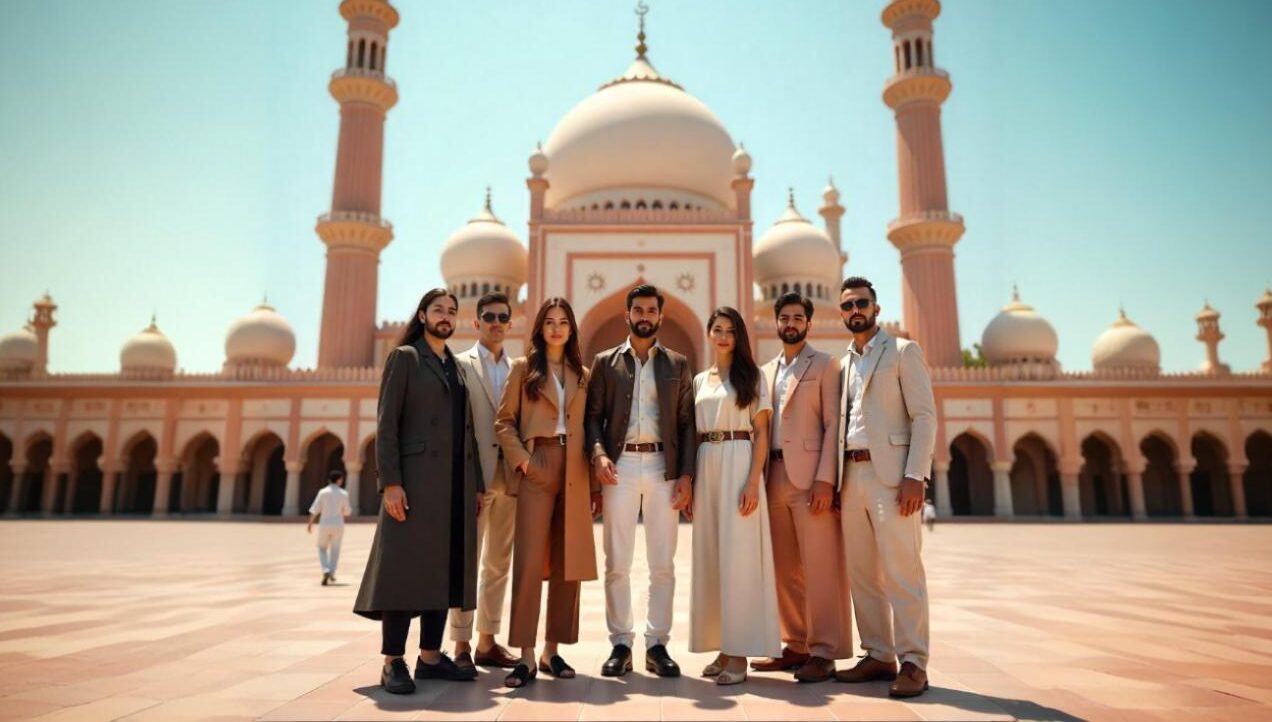The Rise of Localized Influencers in Pakistan: A Game-Changer for Brand Partnerships
Introduction:
In Pakistan’s rapidly evolving digital landscape, brands are exploring innovative ways to connect with their audiences. One powerful approach is collaborating with localized influencers—individuals deeply embedded in specific regions and cultures. These influencers are more than just content creators; they are trusted voices who shape consumer behavior and boost brand visibility.
As marketing moves beyond generic celebrity endorsements, localized influencers have become vital for brands seeking authentic connections with Pakistani consumers.
Who Are Localized Influencers?
Localized influencers operate within specific cultural, linguistic, or regional communities in Pakistan. They may be TikTokers from interior Sindh, YouTubers in Punjabi or Saraiki, or Instagram bloggers from Gilgit, Quetta, or Peshawar. What sets them apart is their close connection to local traditions and their community.
For instance, a food vlogger in Peshawar might share Pashto recipes with a touch of local humor. Meanwhile, a Balochi fashion blogger could blend traditional embroidery with modern trends—capturing the interest of young audiences while honoring heritage.
Why Partner with Localized Influencers?

1. Authentic Content Creation
Localized influencers understand the language, humor, and values of their audience. Their content, therefore, feels genuine and relatable. This authenticity fosters higher engagement and strengthens the connection between brands and consumers.
2. Targeted Reach
These influencers offer direct access to niche markets. Whether you’re targeting a district in Punjab or a town in Balochistan, they deliver your message where it matters most.
3. Cost-Effective Strategy
Compared to celebrity endorsements, localized influencer partnerships are generally more affordable. Yet, they often generate better results due to the high level of audience trust and relevance.
Types of Localized Influencers
Localized influencers in Pakistan typically fall into three categories:
- Nano-influencers: Fewer than 1,000 followers but very high engagement. Ideal for personalized promotions.
- Micro-influencers: Between 1,000 and 100,000 followers. Offer niche influence with focused targeting.
- Macro-influencers: Over 100,000 followers. Provide broad visibility while maintaining local relevance.
Why Local Influencers Matter in Pakistan
Pakistan is a culturally rich and diverse country, with distinct languages, lifestyles, and values across regions. Local influencers offer unique advantages:
- Cultural Understanding: They grasp the traditions and sensitivities of their audience.
- Trust and Relatability: Seen as “one of us,” they foster stronger consumer trust.
- Higher Engagement: Their content often inspires meaningful interactions and dialogue.
Best Practices for Brands
To maximize success with localized influencer marketing, brands should follow these best practices:
1. Vet Influencers Carefully
Ensure their tone, values, and audience align with your brand identity.
2. Set Clear Goals
Define campaign objectives—whether increasing awareness, engagement, or sales.
3. Maintain Relationships
Support influencers consistently and treat them as long-term partners rather than one-time promoters.
4. Track and Adjust
Measure success through metrics like engagement rates and conversions. Be ready to optimize the strategy.

Influencer Marketing in Pakistan: A Growing Trend
With over 190 million mobile users and expanding internet access, Pakistan’s digital presence is booming. Platforms such as TikTok, Instagram, YouTube, and Facebook are central to this growth.
Previously, brands focused on macro-influencers. Although effective for visibility, those partnerships often lacked cultural depth. Now, localized influencers deliver deeper, more relevant engagement—where real impact begins.
Why Brands Are Pivoting to Localization
1. Hyper-Targeted Engagement
Localized influencers allow brands to reach specific audiences based on language, location, or lifestyle. For example, a telecom brand promoting regional 4G services in Gilgit can collaborate with creators who speak Shina or Balti to boost trust and relevance.
2. Cultural Authenticity
Pakistan’s regional diversity means a single marketing message won’t resonate nationwide. What works in Lahore might fail in Gwadar. Local influencers ensure your messaging respects local values.
3. Deeper Trust
Followers often perceive local influencers as genuine and approachable. Their recommendations carry more weight than those from distant celebrities.
4. Better ROI
Collaborating with local creators is usually more budget-friendly. Furthermore, these partnerships often yield better results thanks to community trust and alignment.
Real-World Success Stories
Tapal Tea
Tapal collaborated with influencers across provinces to promote regional blends. From doodh pati in Karachi to kehwa in Balochistan, the campaigns embraced cultural diversity and strengthened brand loyalty.
JazzCash
JazzCash ran TikTok campaigns with influencers from South Punjab and KP. Their relatable skits, delivered in local dialects, simplified digital payments for rural audiences.
Foodpanda Riders Campaign
Foodpanda partnered with regional content creators to highlight the struggles of delivery riders. This humanized the brand and increased emotional engagement.
Challenges to Consider
While effective, localized influencer campaigns present several challenges:
- Quality Control: Some influencers lack polished production. Brands must strike a balance between authenticity and professionalism.
- Scalability: Managing campaigns across languages, regions, and platforms can be logistically complex.
- Brand Fit: Not all influencers align with brand values. Mismatched collaborations can backfire.
- ROI Tracking: Measuring results in small communities or local dialects may require creative solutions.
Influencer Agencies and Platforms
To address these challenges, several Pakistani agencies provide specialized support. Companies like Walee, Digitz, and Bramerz offer data-driven services to:
- Identify relevant influencers
- Track performance
- Manage region-specific campaigns
- Handle contracts and logistics
These platforms make scaling localized influencer marketing both practical and effective.
The Future: Hyperlocal and Community-Driven
Pakistan’s digital marketing future is hyperlocal. Brands will move beyond provinces to target individual districts or neighborhoods. Local influencers will evolve into digital community leaders—not just brand ambassadors.
Expect multilingual content in Urdu, Punjabi, Pashto, Sindhi, Balochi, Shina, and more. Creators fluent in these languages will become vital in connecting brands with diverse audiences.
Moreover, influencer campaigns may transition from purely promotional to community-driven collaborations that encourage social change alongside brand storytelling.
Conclusion
In a country as culturally vibrant as Pakistan, localized influencer marketing is more than a passing trend—it’s a strategic necessity. These influencers enable brands to earn trust, expand reach, and connect deeply with consumers.
By choosing the right voices and implementing best practices, brands can unlock tremendous value. The future of marketing in Pakistan will be driven by authenticity, community, and cultural relevance—told one local story at a time.
FAQs
Q1: What are localized influencers?
A1: They are individuals who create content tailored to specific regions, cultures, or languages in Pakistan.
Q2: Why are localized influencers valuable for brands?
A2: They foster genuine engagement, offer cultural insights, and build trust with specific audiences.
Q3: What are the benefits of these partnerships?
A3: Increased engagement, reduced marketing costs, and access to niche demographics.
Q4: What influencer types exist in Pakistan?
A4: Nano (under 1,000 followers), Micro (1k–100k), and Macro (over 100k) influencers.
Q5: How should brands work with them?
A5: Brands should align values, set clear goals, nurture relationships, and track results carefully.
Q6: Are there challenges?
A6: Yes—quality control, scalability, cultural fit, and analytics can all pose difficulties.
Q7: How can success be measured?
A7: Through engagement rates, reach within target demographics, and content performance analytics.
Q8: What’s next in localized influencer marketing?
A8: Hyperlocal strategies, multilingual content, and community-driven campaigns will shape the next wave of influencer marketing in Pakistan.
